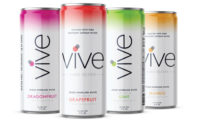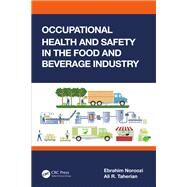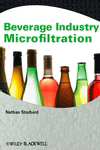Understanding occupational health risks within beverage manufacturing
Defined prevention program helps employees, employers

Employers have an obligation to do whatever is possible to safeguard the health and safety of their workers. To enhance performance while maintaining a safe and healthy workplace, employers must strive to reduce work related injuries and illnesses by creating a structure and framework for identifying potential risks and then problem solving.
The Bureau of Labor Statistics’ (BLS) May 2015 National Industry-Specific Occupational Employment Estimates reports that more than 12 million people are employed in the North American Industry Classification System (NAICS) manufacturing sectors (31, 32 and 33) with slightly more than 1.7 million in the food and beverage manufacturing industry.
The beverage industry consists of two major categories and eight sub-groups. The non-alcohol beverage category is made up of soft drink syrup manufacturing; soft drink and water bottling and canning; fruit juice bottling, canning and boxing; the coffee industry and the tea industry. Alcohol beverage categories include distilled spirits, wine and brewing.
In its’ Employer-Reported Workplace Injury and Illness Summary the BLS reported that workplace illnesses accounted for 4.8 percent of the approximately 2.9 million injury and illness cases reported by private industry employers in 2015 – roughly 140,500 cases. Employers recorded most illness cases (62.6 percent) as “Other illnesses,” which includes such things as musculoskeletal disorders and systemic diseases and disorders, among others.
Within the beverage industry injury risks are generally well recognized and understood – manual handling and repetitive motion tasks; slips, trips and falls; machinery related hazards; confined space entry; and powered industrial truck related hazards. Occupational health is generally more difficult to manage than safety. Work-related causes of ill health tend to be more difficult to spot and it often takes some time for symptoms to develop and therefore the connection between cause and effect is less obvious. Recognized main occupational illness risks in beverage manufacturing include:
- Musculoskeletal disorders
- Noise induced hearing loss
- Occupational lung disease
- Occupational rhinitis
- Occupational skin diseases
Musculoskeletal Disorders
Musculoskeletal disorders (MSDs) encompass a variety of strain, sprain and overuse problems. These issues include everything from backaches to work-related upper limb disorders which can cause pain, numbness, swelling and tingling in the arms, hands and wrists. Overexertion from lifting, pulling, and pushing heavy objects is the normal cause of these injuries. Workers also often have to perform tasks in awkward and stressful postures, which may result in sprains and strains, particularly to the wrists and elbows.
Overexertion issues are best reduced by mechanization of strenuous tasks. Awkward and stressful postures issues are best addressed by designing optimum equipment and work stations.
Noised Induced Hearing Loss
According to the BLS occupational hearing loss is the most commonly recorded occupational illness in manufacturing. These numbers are particularly disturbing because first a worker’s hearing loss must be determined to be work-related and then the hearing loss must be severe enough that the worker has become hearing impaired, in order to be OSHA-recordable.
Although a traumatic noise exposure may cause an immediate hearing loss, most occupational hearing losses occur so gradually that workers are unaware they are losing their hearing. The rate of hearing loss growth is greatest during the first ten years of exposure. This means hearing loss prevention is especially important for new workers. However, with continued exposure, the hearing loss spreads into those frequencies most needed to understand speech. This means that preventing occupational hearing loss is also important for workers in their mid and late careers.
What’s causing all of the noise? The following processes in beverage manufacturing are high noise sources:
- Glass bottling lines
- Product impact on hoppers
- Pneumatic and compressed air noise
- Milling operations
- Blast chillers / freezers
When employees suffer occupational hearing loss, everyone loses. Recognizing damaging noise sources so that, where possible, the exposure can be eliminated or reduced is the preferred hearing loss prevention strategy.
Occupational Lung Disease
Repeated and long-term exposure to certain irritants on the job can lead to a vast array of lung diseases. Contrary to the popular belief, coal miners are not the only ones at risk for occupational lung diseases. For example, working in the beverage manufacturing industry can expose a person to hazardous chemicals, dusts and fibers that can lead to a lifetime of lung problems.
According to the American Lung Association, occupational lung diseases are the primary cause of occupation-associated illness in the United States based on frequency, severity and preventability. Most occupational lung diseases are caused by repeated, long-term exposure, but even a severe, single exposure can damage the lungs.
The following are the most common symptoms of lung diseases, regardless of the cause:
- Coughing
- Shortness of breath
- Chest pain
- Chest tightness
- Abnormal breathing pattern
Occupational asthma affects workers who inhale dusts which are respiratory sensitizers – such as dust from barley, hops and grains; additives; and wood. Workers involved in milling, malting and coopering (the art of handcrafted barrel making) are at particular risk. It is the most common form of occupational lung disease and can worsen pre-existing asthma. Characterized by common asthma symptoms (such as a chronic cough and wheezing), occupational asthma is a reversible condition when diagnosed at an early stage.
The best prevention for occupational lung diseases is to eliminate or reduce exposure to the dusts that cause lung diseases.
Occupational Rhinitis
Rhinitis is an inflammation of the nasal mucous membrane characterized by one or more of the following symptoms – nasal congestion, rhinorrhea (runny nose), sneezing, postnasal drip or coughing. It is generally subdivided into two groups – allergic and non-allergic.
Occupational rhinitis is caused by inhalation of irritant dusts or fumes – grain, seasonings, additives and wood. Although this condition alone is not life-threatening, its’ impact on quality of life and work productivity can be substantial. It can also aggravate other conditions such as occupational asthma.
The best prevention for occupational rhinitis is to eliminate or reduce exposure and avoid inhaling the irritant dusts or fumes that cause rhinitis.
Occupational Skin Diseases
Skin diseases are also among the most common occupational diseases reported. The primary occupational skin disease is contact dermatitis. Any workplace that involves excessive hand washing, hand hygiene or wet work is at high risk for occupational contact dermatitis. Dermatitis is an inflammation of the skin. Contact dermatitis is a skin condition caused by contact with something that irritates the skin or causes an allergic reaction.
Irritant contact dermatitis is a localized irritation or rash caused by direct contact with the irritant. Irritants common in beverage manufacturing include water, detergents, acids, caustics and friction. The severity depends on the amount and strength of the irritant, length and frequency of exposure, workers’ skin susceptibility and environmental factors. It can appear differently depending on the conditions of exposure. Exposure to an acid or caustic substance may cause an immediate skin reaction resulting in pain, swelling and blistering. Whereas contact with mild irritants such as water, soap or detergent may over a period of time cause dryness, itching and cracking of the skin. Eventually sores may appear along with crusts and scales.
Allergic contact dermatitis is caused by an immune response following skin contact with an allergen. Small quantities of the allergen may be sufficient to cause an allergic response.
Irritant and allergic contact dermatitis are difficult to distinguish from one another, but allergic contact dermatitis may occur in other places on the body that did not come in direct contact with the allergy-causing material.
Recognizing how employees come in contact with the irritant, so that where possible, the exposure can be eliminated or reduced is the preferred prevention.
Preventing occupational health hazards
To minimize the risk of occupational health hazards, employers must have a defined prevention program in place. Senior management must be committed to the prevention of occupational health hazards and must provide the resources needed to implement and sustain the program. All possible occupational health hazards must first be identified and assessed. Then risk management and control procedures must be put in place.
Elimination of the health hazard(s) is preferred. If that is not possible substituting a less hazardous substance or process is to be considered next. Engineering controls – enclosing, containing or isolating – to minimize exposure follows elimination and substitution. Using administrative controls involves having specific policies, procedures and safe work practices in place to reduce exposure to occupational health hazards. Lastly, identification and use of proper personal protective equipment (PPE) is necessary when engineering and administrative controls are not feasible or while such controls are being implemented.
The Occupational Safety and Health (OSHA) Act general duty clause [Section 5(a)(1)] requires that each employer furnish to each of its employees a workplace that is free from recognized hazards that are causing or likely to cause death or serious physical harm. Within the beverage manufacturing industry, recognized potential occupational health hazards include MSDs; noise induced hearing loss; occupational lung disease; rhinitis; and occupational skin diseases. Minimizing exposure to these and other potential occupational health hazards begins with identifying and assessing the potential hazards and then putting risk management and control procedures in place.
Looking for a reprint of this article?
From high-res PDFs to custom plaques, order your copy today!








